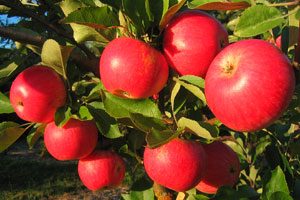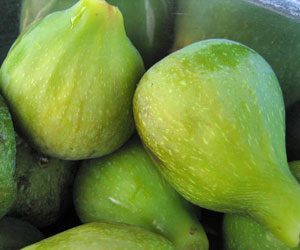It sounds great, doesn’t it? 4 or 5 varieties of apple, all on one tree! Both pie and sweet cherries on one tree! How about plums and peaches together-an on-the-tree fruit cocktail! No worries about pollination, long fruiting season….why doesn’t Cloud Mountain carry trees like these?

Akane apples
It’s a question we get asked every year. But we like to carry plants that really work for people. Fruit trees are not that easy to start with, and learning to prune them correctly can be a life long effort. Each kind of fruit tree is pruned slightly differently, and even sometimes different varieties are pruned differently. When you start talking about multiple varieties grafted to one tree, you increase the challenge of keeping that tree fruiting.
Every variety of fruit has it’s own characteristics- vigor, disease resistance, bearing type. Each of those characteristics requires some knowledge in pruning and care to keep the tree balanced and fruitful. When each branch of a tree has different characteristics, it take a skilled pruner to keep them all balanced. Without that skill, over time, the most vigorous variety takes over the tree, and the weaker varieties decline and die out. You end up with a single variety tree.
A better solution to small spaces is to plant several trees on dwarf or mini-dwarf rootstocks. Each variety has its own roots, so won’t out-compete the other varieties planted. We’ve seen some sites that even recommend planting two trees in the same hole- this could work if you can keep them adequately watered and fed, and will present its own pruning challenges.

Desert King Figs
Time to….
- If you are spraying for codling moth, and haven’t put your first spray on, do it ASAP
- Put up maggot traps to monitor for apple maggot flies if you’re planning on controlling apple maggot with sprays- or get the maggot barriers on the fruit ASAP
- Pinch your fig trees! Each branch as it grows should be allowed to get 4-6 leaves, then pinch out the tip of the branch (wear rubber gloves, the sap is sticky!) Do this once now, then again in about 4-6 weeks. This will keep the breba crop from setting until August, keeping those figs small enough to overwinter for next summer’s harvest
- Be aware of drought issues, especially for young plants. In Whatcom County, we are behind normal on rainfall- check your soil moisture and water if it’s dry! The worst time for plants to experience drought is when they are actively growing.

